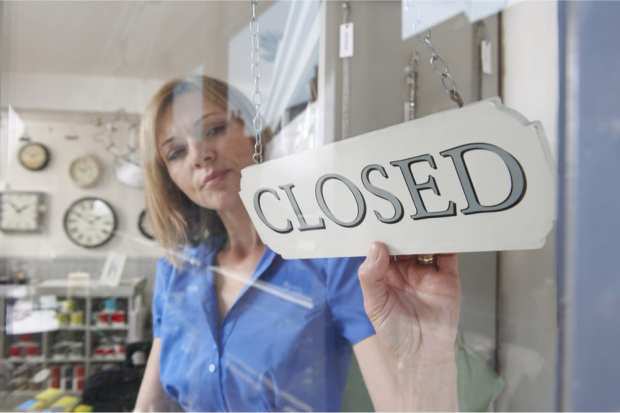Jobless Claims Fall, But SMBs (And Jobs) Still Walk A Pandemic Tightrope

Trend — or more tightrope walking?
The latest data on weekly jobless claims show a bit of improvement, but we’re not out of the woods yet.
As the small and medium-sized businesses (SMBs) that power Main Street still face a cash crunch, improvements to the labor picture may prove ephemeral.
In terms of headline numbers, the Labor Department on Thursday (Sept. 3) reported weekly initial claims were down by 130,000 to a seasonally adjusted 881,000 claims for the week ended Aug. 29.
The department has also said the number of workers collecting unemployment benefits through government programs was down by 1.2 million individuals to 13.3 million as of the week ended Aug. 22.
There’s a bit of noise here, as the number of claims is better than the one million filed in the prior week, but it’s not directly comparable, notes Bloomberg. Some methodologies for data presentation have changed, to account for the huge impact of the pandemic. Unadjusted figures show that absent seasonal adjustments, claims were up by just under 7,960 week over week. And the total number of claims — across all government unemployment conduits and the Pandemic Unemployment Assistance program — were up by 2 million to 29.2 million. That data, according to Bloomberg, may be a bit distorted too.
But as the old investment maxim goes: Better to be generally right about what we’re seeing … than precisely wrong. In other words, the general picture is that the unemployment data shows stubborn persistence in economic headwinds, and a staggering number of people are still collecting unemployment. While a dip in the trend is a good thing, consider the fact that at more than 880,000 claims, per the most recent data, we’re multiples above the 200,000 run rate we’d seen before the pandemic hit.
To get a sense of what lies over the horizon, a recent report by PYMNTS, done in collaboration with Visa, found that more than half of SMBs surveyed were unsure that they would survive the pandemic — or were fairly certain they wouldn’t.
Cash flow is the lifeblood of these firms. Cash flow is what pays salaries. Cash flow is what gives business owners the confidence to hire again — which would, of course eventually show up in the unemployment data recorded by the Labor Department.
But as PYMNTS found, at least 76 percent of small firms surveyed said they experienced cash flow issues since the pandemic began. As many as 37 percent of SMBs said they were tapping personal funds to keep afloat, and 26 percent are using their personal credit cards. In terms of a ripple effect that directly affects the employment picture, 20 percent are “purposely” delaying supplier payments (which in turn hits suppliers’ cash flow and ability to keep staff on board or hire new employees) while 20 percent are delaying payments to their employees. Amid such a rocky cash flow landscape it makes sense that the unemployment picture would be stubbornly high. Most firms, according to the SMB survey, see the pandemic as hitting their business for more than 200 days. Where there’s uncertainty about the future, there’s uncertainty about committing new capital.
And though the headline numbers from the Labor Department Thursday may have cheered at least some observers, one data point does not a trend make.
